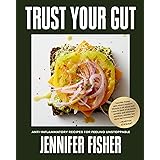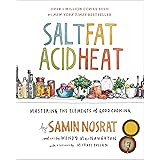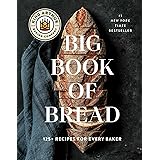The recent video featuring a dairy farmer directly addressing activist claims highlights critical misconceptions surrounding modern ethical dairy farming practices. Such direct interactions are often seen in the public sphere, bringing complex agricultural realities into sharp focus. A deeper understanding of these practices is frequently sought by consumers and those interested in animal welfare.
Understanding Breeding Methods in Ethical Dairy Farming
One of the most contentious points raised in discussions about animal agriculture is the method of breeding. In the video, a strong claim regarding “rape” is directly refuted by the farmer. This specific farmer clarifies that artificial insemination is not used on his farm, indicating a commitment to natural breeding processes.
Natural Breeding vs. Artificial Insemination in Livestock Management
Many dairy operations do utilize artificial insemination (AI) for breeding their herds. AI is employed for various reasons, including genetic improvement, herd health management, and safety for both animals and handlers. However, it is noteworthy that other approaches exist, such as the natural breeding method described by the farmer.
With natural breeding, bulls are allowed to run with the herd. This method allows cows to select a mate when they are in season, aligning with a more traditional and perhaps instinct-driven process. The farmer specifically mentions that “bucks get the girls when the girls are in season,” emphasizing a natural choice component. This shows that diverse methods are embraced within the realm of ethical dairy farming practices.
Calf Rearing and Milk Utilization on Dairy Farms
The conversation in the video also touches upon the relationship between calves and their mothers, particularly concerning milk. The activist questions the farmer’s profit from animals, implying a separation that harms the young. However, the farmer offers a different perspective on calf care and milk production.
The “Excess Milk” Concept and Calf Welfare
The farmer explicitly states, “We allow our kids to stay on their mother. We only take the excess milk.” This statement introduces the concept of “excess milk,” which is crucial for understanding ethical dairy farming practices. It implies that the calves’ nutritional needs are prioritized, and milk is only harvested beyond what is required for their growth and development.
It is often misunderstood that all milk is immediately taken from calves. In many ethical dairy farming setups, calves are provided with colostrum and milk for a period deemed essential for their health. After this initial stage, some milk may be collected for human consumption, with calf welfare remaining a paramount concern. Imagine if a mother produced significantly more milk than her baby could consume; the “excess” would naturally be available.
Different Approaches to Calf Separation
While the farmer in the video describes calves staying with their mothers, other ethical practices involve separating calves shortly after birth. This is typically done for reasons such as disease prevention, careful monitoring of calf health, and ensuring precise nutritional intake. In such cases, calves are often housed in individual pens or group housing, receiving specialized care and milk from their mothers or milk replacer formulated for optimal growth.
The decision on when and how to separate calves is complex, influenced by breed, farm management styles, and specific animal welfare protocols. However, a common thread among responsible farmers is the dedication to ensuring the health and well-being of the young animals. This commitment is a hallmark of truly ethical dairy farming practices, regardless of the specific method chosen.
Profit, Ownership, and the Farmer’s Responsibility
The activist’s assertion that animals are “commodities” and that farmers profit from them is a direct challenge. This perspective often frames agricultural operations solely through an economic lens, overlooking the deep connection many farmers have with their livestock. The farmer strongly refutes this notion.
Beyond “Commodity”: Sustaining Life Through Dairy
The farmer’s response, “I sell their milk so that they can get food!”, powerfully encapsulates a different viewpoint. This statement highlights that profit, in an agricultural context, is often reinvested directly into the care and sustenance of the animals. It is a necessary component for providing feed, veterinary care, shelter, and labor required for animal welfare. Without financial viability, a farm cannot maintain the standards of care expected in ethical dairy farming practices.
Imagine if a business that provides vital services was unable to cover its costs; the services would cease. Similarly, a farm must be profitable to continue its operation and, by extension, to continue caring for its animals. The ownership of animals is therefore often viewed as a profound responsibility, a stewardship, rather than mere possession for exploitation.
Investment in Animal Welfare and Sustainable Practices
Modern ethical dairy farming practices are characterized by significant investments in animal welfare. This includes state-of-the-art milking parlors designed for cow comfort, specialized nutrition programs, and proactive veterinary care. These investments improve animal health and productivity, but they also contribute to the overall quality of life for the dairy herd. Farmers often take great pride in the health and vitality of their animals.
Furthermore, many dairy farmers are actively involved in sustainable land management and environmental stewardship. These practices ensure the long-term health of the land and resources that support their animals. The holistic approach to farming demonstrates a commitment that extends far beyond simple monetary gain. It is a testament to the comprehensive nature of responsible and ethical dairy farming practices.











